Halogen lamps
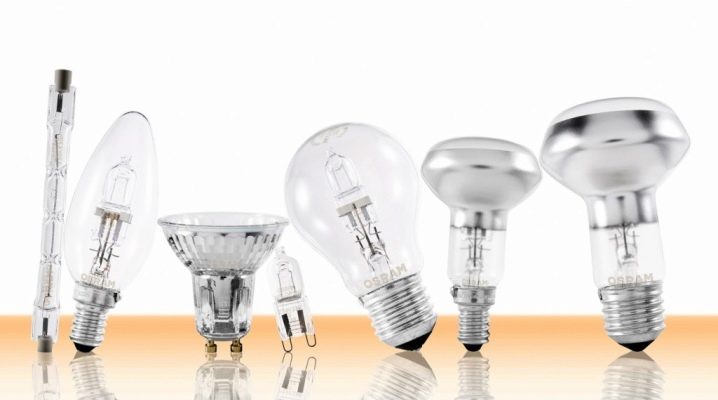
Lighting plays one of the important roles in the life of a modern person. With its help, many technological and household processes are organized. The design of any lighting fixture involves the use of special lamps that generate a stream of light.
These mechanisms can work on the basis of various substances that differ in both composition and physical parameters. Among all this variety, special attention should be paid to halogen lamps. The products are quite popular and are very widely used in modern industry.
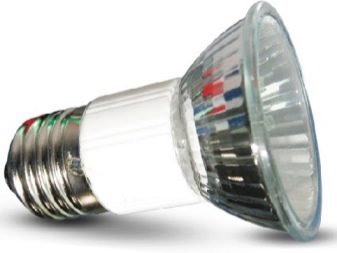
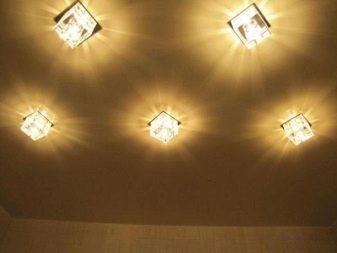
What it is?
Halogen bulbs are a type of conventional incandescent bulb. A feature of such structures is the use of special gas fillers instead of conventional air. The main medium is the gases of the halogen group.
Several basic substances are used for lamps of this type:
- bromine;
- iodine;
- chlorine.
Sometimes the lamp bulb can be filled with a mixture of these components, which allows for better technical performance. This structure allows you to significantly reduce the size of the base.
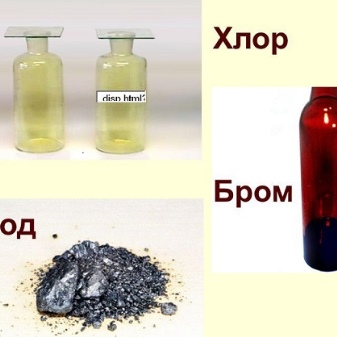
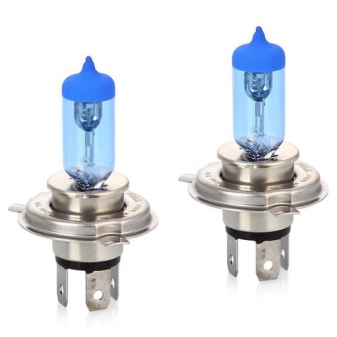
These energy-saving incandescent bulbs can be used for lamps and chandeliers as well as for car headlights.
Several technical characteristics of this product should be noted:
- Lamp power can vary over a very wide range. Today on the market you can find devices with indicators from 1 W to 20 kW. All of them are used to solve specific problems both in everyday life and in industry.
- Life time halogen lamp depends on its modification. Often this figure does not exceed 4 thousand hours. Please note that when using soft start technology, this figure can be increased up to 12 thousand hours.
- Colour temperature. The lamp is characterized by a good color rendering, which, according to the classification, is equal to the spectrum index of Ra 99-100. This value is found in black bodies, which are heated to a temperature of 2800-3000 K.
The heating time of the halogen lamp is quite short, which allows you to get a warm luminous flux in just a few seconds.
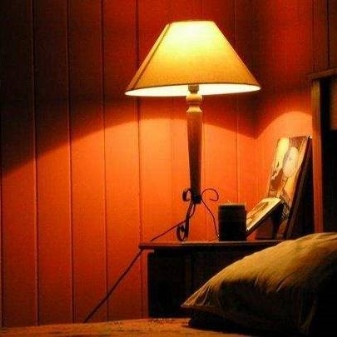

It should be noted that the bulb of the device can reach very high temperatures during operation. Therefore, it is made of special quartz glass that can withstand such loads.
The base of the product can be different, which allows it to be connected to different electricity generators. Some models have special outputs in the form of metal threads that need to be connected only using special connectors. As for the luminous flux, this value often depends on the wattage of the lamp. You can see the approximate figures in the table.

It should be noted that all characteristics of halogen devices may vary slightly depending on the manufacturer and the environment of use.
Principle of operation
Halogen bulbs are more advanced versions of conventional incandescent bulbs.
Such a structure consists of several main components:
- Tungsten filament. This element is made in the form of a spiral, which allows you to increase the working area of the system. In this way, much more light is received than a straight filament would generate. The generation of light radiation occurs due to the passage of current through the tungsten.This causes the metal to generate photons, which are released into the external environment.
- Filler gas. As already mentioned, halogen substances are used in such lamps. This component solves several problems at once. First of all, the gas prevents the rapid evaporation of the tungsten filament, which can eventually lead to its destruction. Also, the filler "forces" the vaporized tungsten to deposit back onto the spiral. This is achieved through special chemical reactions in which the components enter.

Please note that in such a lamp, the walls do not fade, since practically nothing settles on them.
At the same time, gas can be pumped into small flasks at high pressure. This, in turn, also extends the service life of the product several times.
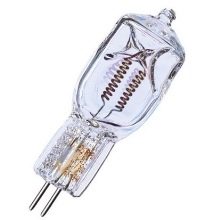
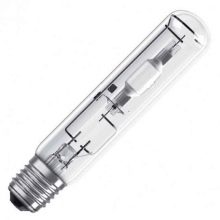
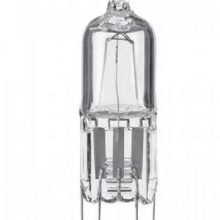
Advantages and disadvantages
The popularity of halogen lamps is increasing every day. This is achieved due to their many advantages:
- Profitability. A similar effect is achieved through high-quality light output. So, for example, devices of this type emit from 15 to 22 lumens per watt of power. In turn, for standard incandescent lamps, this value does not exceed 12 lm / W. Therefore, with the help of halogen analogs, you can save almost twice as much electricity. Please note that these indicators may improve over time, which also depends on the specific manufacturer.
- Life time. The use of halogens made it possible to significantly increase this indicator in comparison with classical counterparts. The average operating time for a halogen lamp is at least 2-5 thousand working hours.
- Radiation indicators. Lamps of this type generate a warm luminous flux, which in terms of performance can resemble solar radiation. Today, the radiation spectrum of these devices can change, which allows you to choose it for any style of interior and working conditions.
- Dimensions. The technical features of halogen lamps are very diverse today. They can be huge for street lighting, or very small, which allows them to be installed on vehicles.


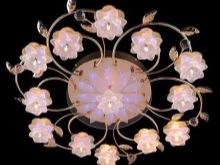
But halogen lamps are not a unique solution to all of these problems.
These products have many disadvantages, among which are:
- Minimal moisture resistance. This is due to the structure of quartz glass, which acts as a protective one. But today this problem is quite easily solved with the help of external flasks made of glass or other material. They act as a buffer and do not allow moisture to penetrate to the lamp itself.
- High heating temperature. This leads to the fact that the lamp can ignite nearby elements. Therefore, it is not recommended to operate them near substances that can easily catch fire. This feature is also important to consider when replacing the lamp. All operations need to be performed only after the entire system has cooled down.
- The lamp bulb is very sensitive to dirt. Such phenomena can lead to its rapid failure. Therefore, it is advisable to carry out all operations with these devices only with special gloves.
- High price. This is due to the fact that the production of such a system is a rather laborious process. Therefore, many may use other alternative sources instead of halogen modifications.
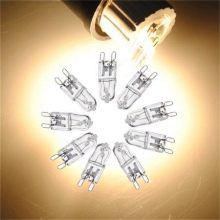

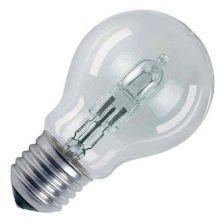
What is better than LED?
The lighting market today is developing rapidly, which leads to the emergence of many modifications of lighting lamps. One of the competitors to halogen light sources is LED models. Every year they occupy an increasing niche, as they have many advantages over other products.

But halogen lamps still have several significant advantages over their LED counterparts:
- Price. The price for LED modifications is several times higher than for a device based on an incandescent filament.
- Light spectrum. Many owners note the warm radiation from halogen models. The light from them has a pleasant yellowish tint, which is not so harsh in the eyes. LED models often operate in a cold spectrum, which requires little temporary adaptation to such lighting. Halogen devices also distribute light more evenly, while LED counterparts cannot boast of this.
- Direct connection. Halogen devices can be operated from a conventional electrical network, which eliminates the use of step-down transformers. In the case of LEDs, these structures cannot be dispensed with.
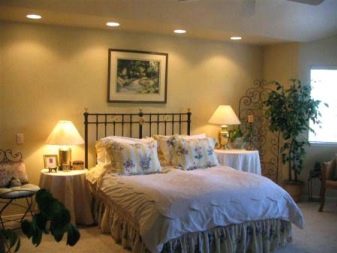
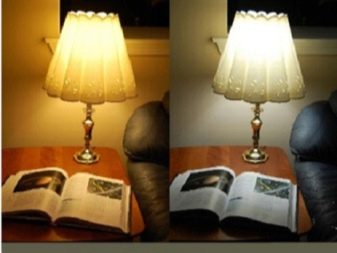
As for the rest of the technical parameters, LED lamps have a complete advantage here. They consume much less energy and also do not heat up so much that they can be installed even on suspended ceilings. At the same time, the lamp does not contain gases that can affect the human body at high concentrations.

Views
The scope of use of halogen lamps is very wide, which has led to the emergence of a large number of their types. These products can be classified according to several criteria, among which the type of case is considered one of the main ones:
- Lamps with an external bulb. These are the most common household modifications. Outwardly, they resemble an ordinary incandescent lamp. But at the same time, the design consists of two flasks. One of them is external and is protective, while inside the second there is a tungsten filament and a filler gas. This design eliminates the direct impact on the quartz glass of the bulb. Products of this type are equipped with plinths that allow them to be screwed into standard holders on chandeliers or lamps. There are two types of plinths on the market - E27 and E14. As for the outer flasks, they can be either transparent or with a matte or milky coating.
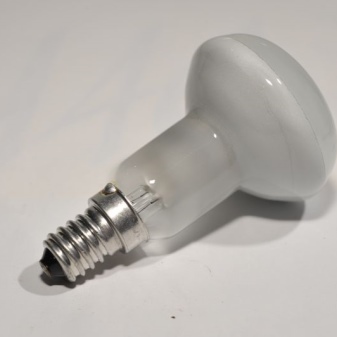

- Linear. Externally, the mechanism consists of a long quartz tube, which is equipped with two contacts at each end. These devices use R7s base / plinths. Lamps of this type are well resistant to mechanical stress. But at the same time, many modifications need to be installed only in a horizontal plane. This is one of the disadvantages of this product. They are used as flood light sources.
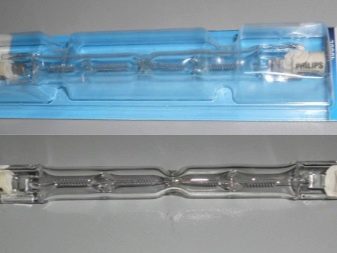
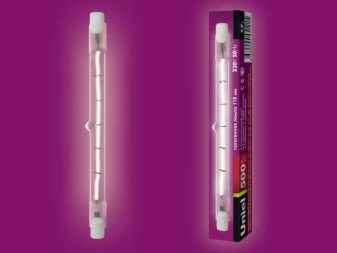
- With reflector. These products are completed with a special frame, on which an aluminum or infrared reflector is applied. The bulb itself with a tungsten filament is located in the center of the product. Lamps of this type are very often tapered. The reflex system allows you to direct the flow of light to the desired point. The upper part of the body is covered with transparent glass, on which an additional UV filter can sometimes be applied. High-brightness products are often used only in low-voltage networks. Therefore, almost all types of reflector lamps can operate from a voltage of 12-24 V. Manufacturers supplement them with several types of caps - GY *, GZ *, GU *, G9 and G10.
This product is one of the most popular today. Lamps with a reflector are very often used to organize spot and area lighting of premises.
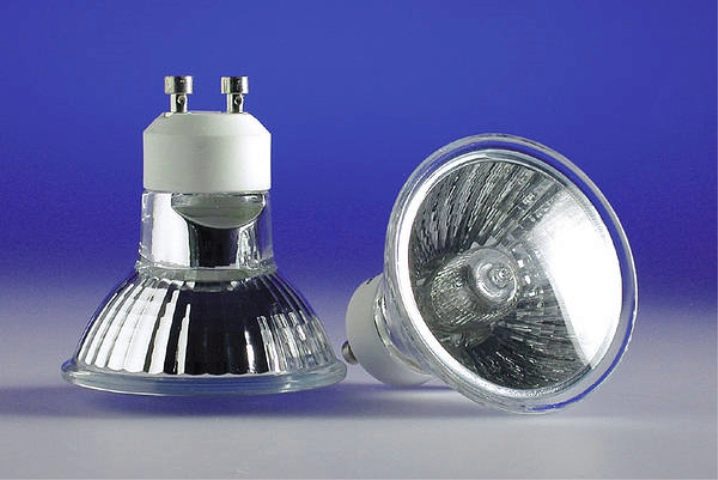
- Capsule. These lamps are small in size, since the design itself consists directly of a bulb of two terminals for connection. Due to their low power, they emit a little light. Therefore, they are very often used for decorative purposes (lighting shelves, etc.). It should be noted that such lamps are very weakly heated. Some designers use them to create lighting for furniture designs to create practicality. The products are complemented by several types of plinths, among which the most common are GY6, 35, G4, and G9.
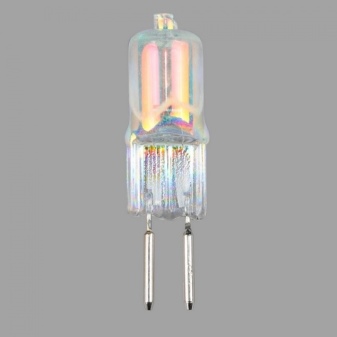
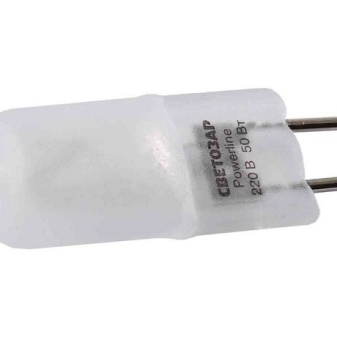
Another classification of halogen lamps is network characteristics.
There are 2 types of such structures:
- High voltage. The lamps can be connected directly to a standard 220 V network. To do this, they only need to be screwed in or plugged into the socket. Often these modifications include two-body modifications, which are complemented by standard plinths.
- Low voltage. This type of product is the most common. They operate in a network with a voltage not exceeding 24 V. The connection of such systems is carried out only with the help of special step-down transformers. Lamps of this type do not emit much heat, so they can be used almost anywhere. Very often they are completed with small chandeliers.
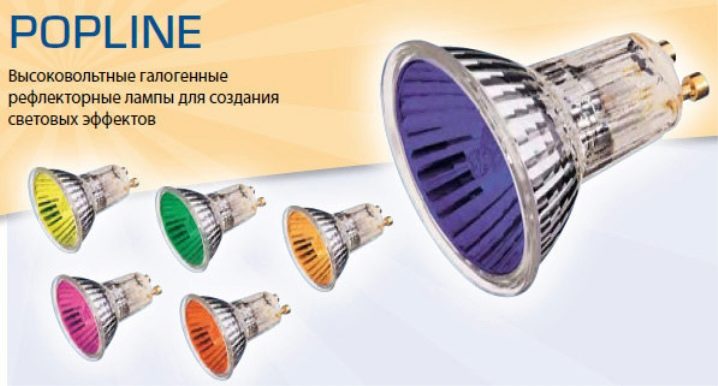
Dimensions (edit)
The variety of halogen lamps is very wide.
The dimensions of such products mainly depend on the type of construction:
- Lamps with two bulbs or with a reflector are practically the same dimensions as a standard incandescent lamp. In this case, the shape may differ slightly, which depends on the manufacturer.
- Flask or finger models are small flat products, the length of which can reach 1-2 cm. The thickness and width depend on the type of the installed base.
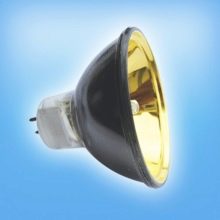
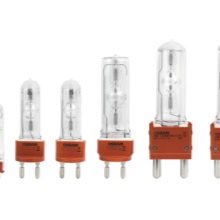
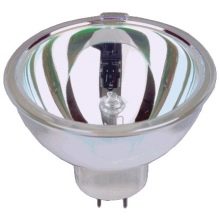
Colors
The luminous flux of each lighting fixture has a different color temperature. This indicator indicates what spectrum of light is present in the beam. Halogen lamps often generate flux in the yellow spectrum.
There are several types of similar lamps on the market today:
- orange;
- yellow;
- red;
- white;
- blue.
The last three luminous fluxes are rather rare, since this spectrum is not classical. To achieve this glow, many manufacturers change the structure and specifications of the lamps.
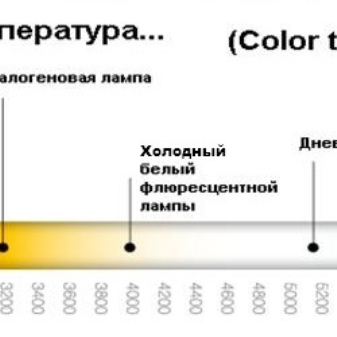

Application
The technical characteristics of halogen lamps do not allow them to be used everywhere. But today the environment for their use is quite wide. On the market you can find home products for both ceiling lamps and light bulbs for chandeliers, sconces or floor lamps. The products are perfect for floodlights as they can be connected to the mains without step-down transformers.
It is very rare to find lamps that are intended for stretch ceilings. But spotlights can be supplemented with low-power light sources, although they are gradually being replaced by LED-based devices.
Bathroom lamps are supplemented with special protective covers, since the bulb is not designed to work in a humid environment.
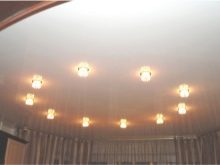
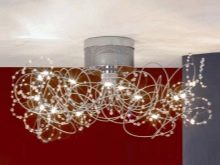
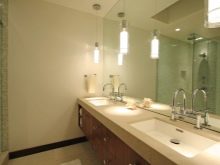
Manufacturers rating
The modern market is saturated with a large number of halogen bulbs that can be used for various tasks.
Among all this diversity, several popular manufacturers should be distinguished:
- Philips. The company is one of the leaders in this field. It manufactures both standard lamps and devices for cars. The products are of high quality and reliability. Many users prefer this brand only.
- Osram. The company's specialists pay a lot of attention to the quality of products. Light bulbs are constantly tested for physical impacts to minimize damage.
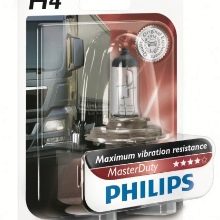
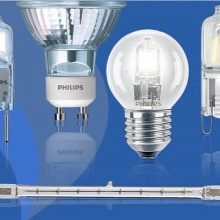
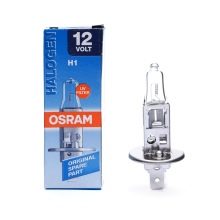
How to choose?
When purchasing this product, several parameters should be evaluated:
- Power and light output. The lamp should give a luminous flux of such strength that it is sufficient for a particular room.
- Voltage. It is important here whether you plan to connect the device directly to the network or use step-down transformers. Note that the low voltage versions consume much less power.
- Base type. It all depends on the device for which you are choosing the lamp. Before purchasing it, you need to familiarize yourself with the technical characteristics of the old model.

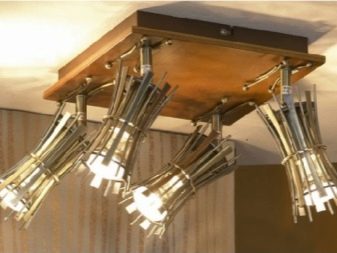
Features of operation
Correct use of a halogen lamp can significantly extend its life. One of the detrimental factors that affects the lifespan is fat.This applies not only to the kitchen, which is formed in the air during frying, but also to the substance on human hands. Therefore, replace lamps only with special gloves. If you want to eliminate this factor, then you can use two-body products.
Many experts recommend wiping the lamp legs with alcohol about once every six months to remove carbon deposits. It is necessary to subject glass and grooves to a similar procedure, where the structure is fixed.
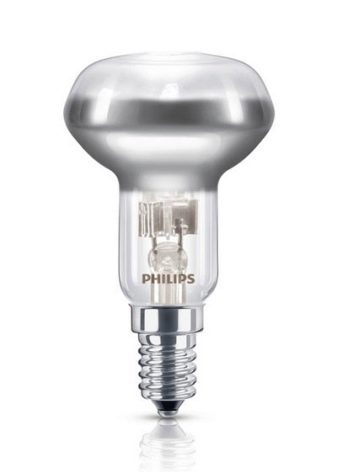
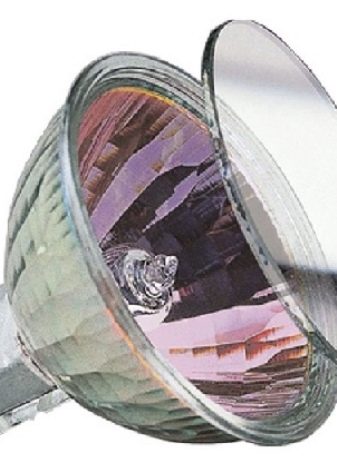
If the device is out of order, it must be disposed of, since the composition contains harmful substances that have a bad effect on humans and the environment. Therefore, in the event of breakdowns, such products must be handed over to special organizations that know its properties and will process it correctly.
What to look for when buying a halogen lamp, see the next video.













The comment was sent successfully.